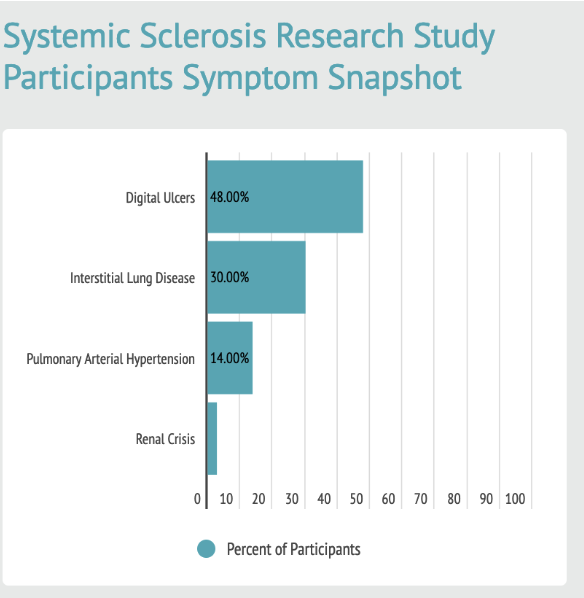In late 2020, 23andMe launched a genetic study of systemic sclerosis, a rare autoimmune disease that results in the hardening and thickening of the skin and other organs.
Within 18 months, we’ve met our goal of recruiting more than 1,500 individuals with systemic sclerosis to participate in this study. We did this through online recruitment and with help from a collaboration with the Scleroderma Research Foundation, and our drug discovery collaboration partner GSK, who provided funding and expertise.

Recruiting to Study the genetics of systemic sclerosis
Simply reaching our recruitment goal so quickly is an important milestone.
Like many rare diseases — defined as conditions that affect fewer than 200,000 individuals in the United States — there is currently no cure or effective treatment for systemic sclerosis. And like many rare diseases, the rarity of this condition makes it challenging for scientists to study. As with many of the more than 7,000 known rare diseases, it is often difficult to find enough people with a rare disease, or enough who are able to participate in research studies. Historically, research on these conditions has been limited and slow.
23andMe’s unique research model allows for online recruitment and participation, which makes it that much easier.
A snapshot of our research participants
While there is still much work to do, we want to mark this recruitment milestone. And as we close our recruitment and begin this next phase of the study, we’re sharing a little bit about those participating in our research.
In all, 1,594 people living with systemic sclerosis consented to participate in our research. Although we haven’t yet begun the study, we’ve begun to characterize the cohort of research participants and we’ve already learned a little bit from them.
The condition is more common among women; indeed, 95 percent of the participants in our study are female. We’ve learned that the median age of onset of symptoms among our participants is 35 for those with what’s called primary Raynaud’s phenomenon. For onset of other systemic sclerosis symptoms, the median age of onset is 38 among those participating in 23andMe’s study.
Raynaud’s phenomenon is the most common symptom for those with systemic sclerosis. It’s characterized by what’s called vasospasms or spasms of the blood vessels that are triggered by cold temperatures or stress. This can lead to discoloration of the fingers, numbness and pain. In some cases, it can also lead to ulcers on the fingers. (Just note that people who do not have systemic sclerosis can also develop Raynaud’s.)

Most Common Symptoms
To give readers a sense of how difficult systemic sclerosis can be for those living with it, we’re sharing some of the most common symptoms reported by our participants.
Almost half of participants, 48 percent, have had sores or ulcers on their fingers. Another serious symptom is called “interstitial lung disease,” essentially scarring of the lungs, and 30 percent of participants reported having this. Lung scarring can make it harder to breathe and get oxygen into your bloodstream.
About 14 percent of participants reported having pulmonary arterial hypertension, or high blood pressure caused by restrictive blood flow in the lungs. Finally, about 3 percent of participants reported having one of the most serious complications from systemic sclerosis, renal crisis, which can lead to renal failure or congestive heart failure.
Studying the Genetics of Systemic Sclerosis
As our researchers begin the hard work of this study, they continue to focus on the goal that this work will generate genetic insights for potential treatments.
This study will allow our researchers to study systemic sclerosis at scale and allow those living with this condition to participate in research that could provide invaluable insight that may lead researchers to a future treatment discoveries.
While we know that about 70 percent of rare diseases are genetic, there is so much we don’t know about these conditions. Only about 5 percent of all rare diseases have approved treatments. But by working to uncover new genetic insights to conditions like systemic sclerosis, we hope to add to the list of approved treatments to address this unmet need.
With the additional consent of participants in the study, we plan to share the data from this study with qualified researchers from academia or biotech labs through the Database of Genotype and Phenotypes (dbGaP). This repository is sponsored by the National Institutes of Health (NIH). The NIH’s dbGaP archives and distributes data from studies investigating the relationship of genotype and phenotype in humans.